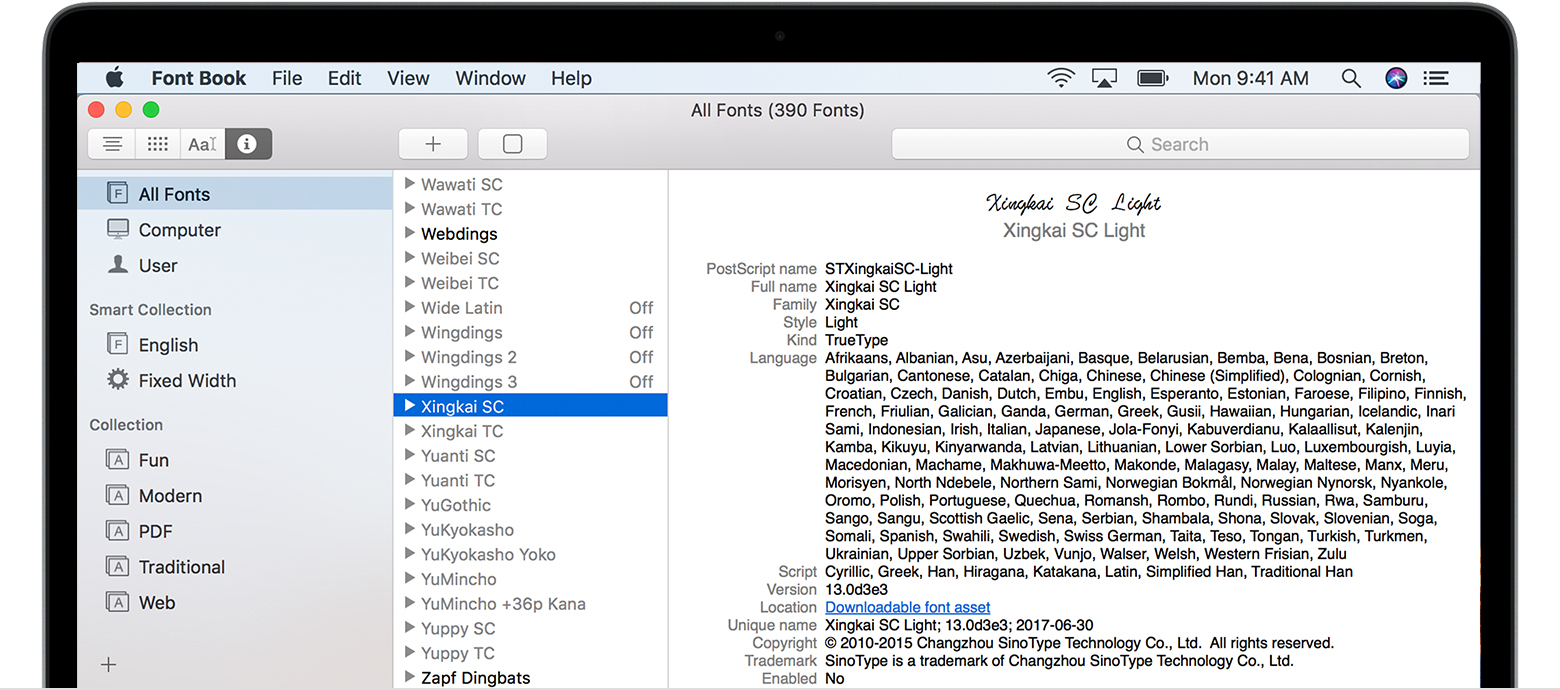To install a new font manually in macOS Sierra, drag its icon into one of the two Fonts folders that you have access to. Why might you want to install them manually? If you install a font via the double-click-and-use-Font Book method, the font will be installed in your Home/Library/Fonts folder, and available only to you.
Under Mac OS X 10.3 or above (including the FontBook) Double-click the font file 'Install font' button at the bottom of the preview. Under any version of Mac OS X: Put the files into /Library/Fonts (for all users). See full list on wikihow.com.
If you want other users to be able to access the new font, drag the font’s icon to the Fonts subfolder inside the Library folder, which is at the root level of your hard drive. This Fonts folder offers universal access. Or, if you usually want to install fonts for everyone, change the Default Install Location in Font Book Preferences (Font Book →Preferences or ⌘+, [comma]).
The Fonts folder in the Library inside the System folder is reserved for macOS and can’t be modified easily. If you try to remove a font from it — or add one, for that matter — you first have to authenticate yourself as an administrator. Do yourself a favor and never remove fonts from /System/Library/Fonts. You can really screw up your Sierra operating system if you remove the wrong font, so don’t go messing with the fonts in folders unless you know what you’re doing.
Your best bet is to always use Font Book, which prevents you from doing anything bad to fonts.
One last thing: Try to refrain from installing more fonts than you’ll use. Having tons of fonts installed can slow down some apps and make Font menus long and unmanageable. Install only the fonts you need — your Mac will thank you for it.

Typography – if used elegantly – can greatly enhance the look and feel of just about anything that involves letter, numbers or characters. For example, custom fonts can form a great logo, as well as offer a more valuable and tailored feel to the piece of work. Forget logos, even changing the default fonts on your operating system can create a unique everyday computing experience.

We’ve already published a tutorial on installing new fonts on Windows. The process is easier and more streamlined on Mac OS X. This guide will tell you exactly that.
Here’s how you go about downloading fonts.
How To Download A New Font
1. Download the Font
There are a ton of free fonts out there. Sites such as Smashing Magazine have lists upon lists of free fonts that are available for personal or commercial use.
Here are a variety of neat font collections to check out:
- 80 Newest Free Fonts for Web Graphic Designers
- Font Squirrel
- Behance
- Font Fabric
- 30 New Free High-Quality Fonts
2. Extract the Font
Usually, the font comes in a .zip or .rar file. This means you’ll need a program to extract it. I use the Free Stuffit Expander. Once you do that, a new Finder window will pop up. Double click the .ttf or .otf file, and the Font Book application should automatically open.
3. Install the Font
Once the Font Book application opens, you can simply Install the font.
4. Organize your Fonts
Font Book automatically sorts out your fonts according to either default installation or user installation. This is a great feature, as it allows you to quickly go through your custom installed fonts. If you’re a typography enthusiast, this definitely is the key.
Font Book can be accessed within the Applications folder, or simply type it into Spotlight to find it.
You don’t need to re-open an application, as the font collection updates on the fly. For example, if you have Photoshop open and you’ve just installed a font, you can simply go back into Photoshop and select the font.
Fonts are very fun to implement and select, and are very easy to use! Don’t be afraid to try out new fonts for different uses, and have fun with your fonts. 🙂
How To Download A New Font Mac Free
The above article may contain affiliate links which help support Guiding Tech. However, it does not affect our editorial integrity. The content remains unbiased and authentic.Also See#Fonts #OS X
Did You Know
You can pin the Recycle Bin on the Start menu in Windows 10.